One of the best things about keeping chickens is seeing just how many different breeds are out there. All different sizes, all different colors, every kind of temperament, and from every corner of the globe. It can be a hobby unto itself, especially if you’re something of a collector like I am.
And another interesting thing is that most domestic chicken breeds are highly distinctive. With just a little bit of practice and study, you can quickly be telling Rhode Island Reds from Wyandottes and Silkies from Cochins like an old pro.
However, there is an infamous and confounding problem when comparing chicken breeds, that of the Ameraucana, Araucana, and Easter Egger. They’re all highly similar, readily confused, and worst of all, share many features with each other, and are often interbred to add even more misery.
It’s a challenging conundrum to be sure, but if you keep reading I’ll do my best to help you unravel it so you can finally call yourself a true chicken virtuoso.
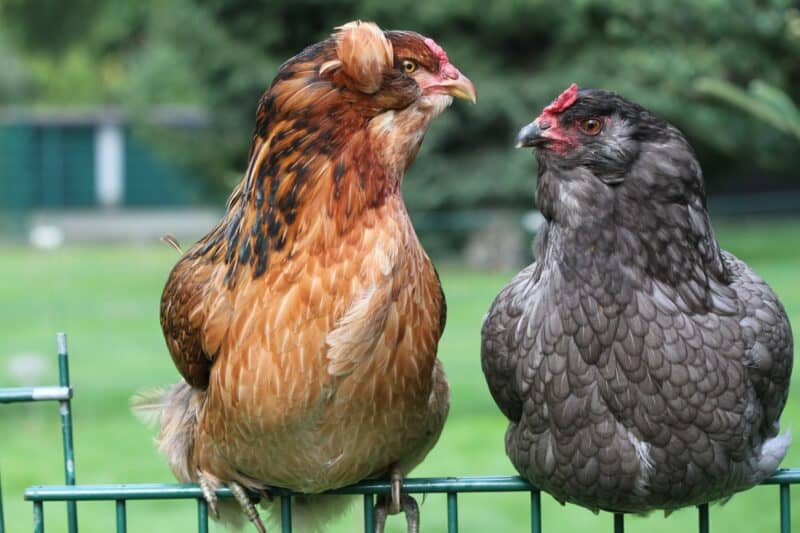
What’s an Araucana?
Araucanas are a domestic chicken breed that hails from Chile, named for the region from whence it comes, Araucania. Or at least, this is the region that most chicken historians believe it to have first come from.
Originally kept for laying eggs and also meat, the Araucana is unique for its blue eggs, long ear tufts, and also its rumplessness, both conditions being caused by a set of lethal genes.
Genetically, birds that inherit both sets die stillborn, so the presence of both the unique tufts and the rumplessness isn’t always present even in birds that breed true.
The breed was first recognized and standardized by the American Poultry Association in 1976.
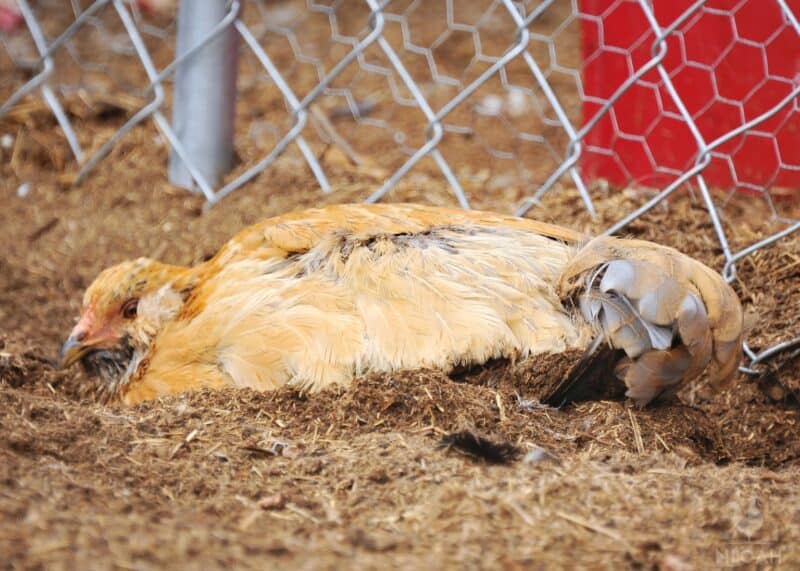
What’s an Ameraucana?
A United States-bred variation on the Araucana, above, the Ameraucana is another medium-sized chicken that lays blue eggs and was developed directly from the arrow car in an effort to eliminate the sometimes lethal genetics present in those birds.
It looks similar to the Araucana in every way with the exception that it has a rump and tailbone along with prominent tail feathers, and instead of ear tufts, it has more typical muffs and a frizzy beard.
Although first developed from the Araucana since at least the 1960s, they were only recognized by the APA in 1984. The actual development of the breed is quite storied and pretty remarkable, worth an article itself, but that’s a story for another time.
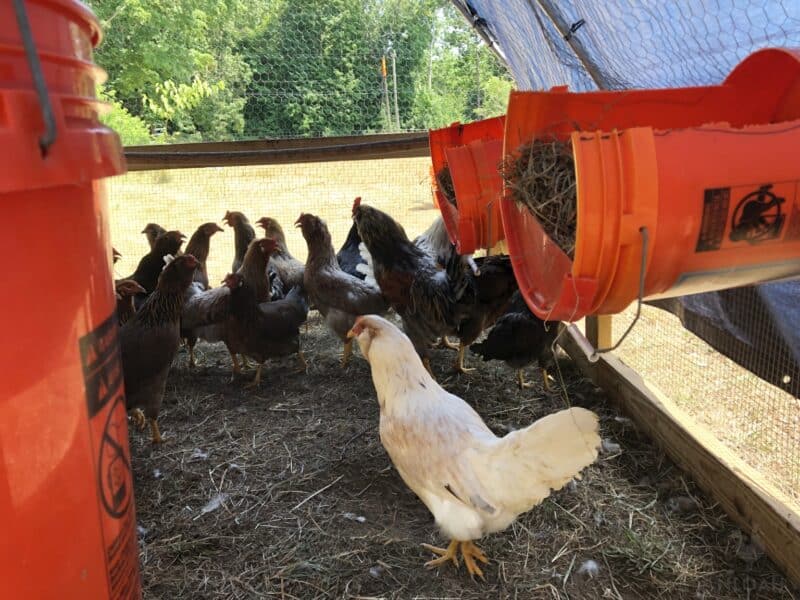
What’s an Easter Egger?
Easter Eggers are not a true breed, but hybrids, chickens that have resulted from the breeding of any chicken capable of laying typical brown or tan eggs with a chicken that lays blue eggs.
The resulting birds vary drastically in individual appearance, but will lay eggs in many different colors, including tan, taupe, brown, blue, blue-green, and olive. Hence the name: their eggs look very much like painted Easter eggs!
Both our Araucanas and Ameraucana are commonly used in the breeding of Easter Eggers. Kept pretty much as egg layers only or novelty chickens, their meat is not known to be of superb quality and they don’t breed true.
As hybrids, what you might call the mutts of the chicken world, despite the popularity of the concept and the resulting birds, they aren’t a true breed and are not recognized by the APA.
Still, the terminology is in common usage among chicken fanciers, hatcheries and private breeders. “Designer” Easter Eggers often have highly idiosyncratic names.
Size
At a glance, the three chickens are all medium-sized chickens.
Araucana
Of the three breeds, Araucanas tend to be the largest with roosters maxing out at about 7 pounds with hens tipping the scales somewhat lighter at around 6 pounds or a little over.
Bantam breeds exist, and weigh just under 2 pounds on average.
Ameraucana
Generally, the Ameraucana is slightly lighter than its progenitor, with roosters weighing around 6 ½ pounds and hens just 5 ½ pounds.
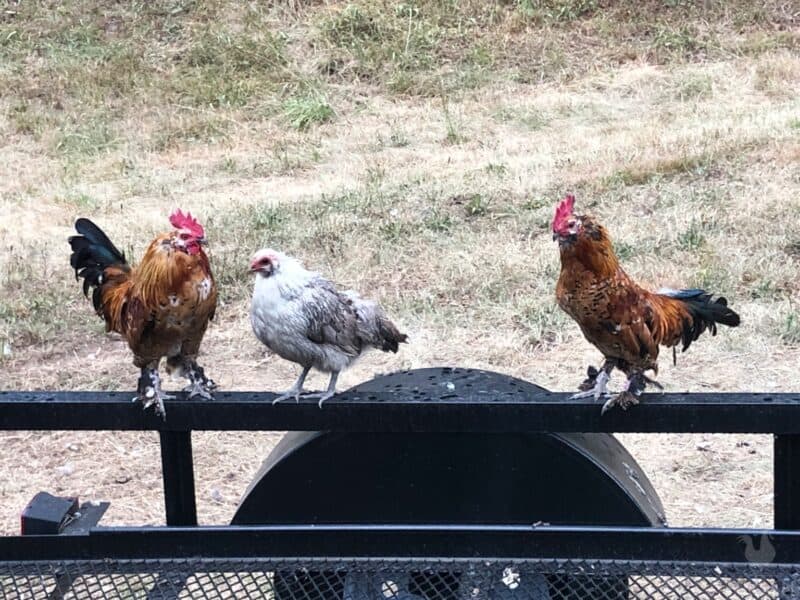
Also like the Araucana, there are bantams. They are basically identical in size to Araucana bantams, weighing about 2 pounds each.
Easter Egger
Being hybrids, the size and weight of Easter Eggers varies, but most of them are also medium chickens. Roosters will typically weigh anywhere from 6 ½ to 7 pounds, with hens being somewhat lighter and usually maxing out around 6 pounds.
Build
All three of these breeds are very similar in overall build.
Araucana
The most notable characteristic of the Araucana is its typical rumplessness. This means it lacks a tailbone, and subsequently a tail and tail feathers. They definitely look incomplete compared to most other domestic breeds you are used to seeing.
But these birds also have a lean and fairly athletic build with slender necks, an upright head, and a predominantly vertical posture. The breast is narrow and tapering.
Ameraucana
Ameraucanas, unlike the Araucana above, always have a rump and tail feathers. Their overall build and musculature are very similar, and have an upright posture with a narrow tapering breast.
However, they tend to look somewhat thicker, particularly around the neck, due to the presence of their muffs and beard which Araucanas lack.
Plus, beneath all the feathers you’ll find that the two birds are basically identical in size though Araucanas are slightly bigger on average as mentioned.
Easter Egger
Easter eggers all have a similar overall build but greatly different appearance otherwise, including the presence of such distinguishing features as muffs, beards, and the like. They will always, though, have rumps and tail feathers.
Appearance
Each of these breeds comes in many distinctive colors, and in the case of Easter Eggers, it can be very difficult to tell what you’re going to get in the first place.
Araucana
Araucanas come in many, many colors worldwide, although only 5 of them are recognized by the APA. In the US, the accepted plumage colors are golden duckwing, silver duckwing, white, black, and black-breasted red. Buff is also officially recognized, but only for the bantam variety.
Elsewhere in the world, Araucanas come in black, blue, black red, blue red, cuckoo, lavender, pile, crele, and spangled.
As mentioned above, two of the most distinctive characteristics of the Araucana are its rumplessness and total lack of tail feathers, along with its distinctive ear toughs that stick off of either side of its head like a handlebar mustache.
However, one or both of these features can be missing in the breed, so while it is reliable it is not a completely certain determining factor.
Ameraucana
In the United States, Ameraucanas have 9 different colors of plumage, including white, black, blue, blue wheaten, wheaten, buff, silver, brown red, and silver.
An easy way to identify them is to look for the presence of prominent muffs and beards which make their necks appear considerably thicker compared to Araucanas, and also the fact that they will always have a tail and tail feathers.
Easter Egger
Easter Eggers have a truly dizzying array of possible colors and patterns that they could be, as it’s totally dependent on their parentage.
Remember, an Easter Egger results from the crossbreeding of any bird that lays blue eggs with any bird that lays brown eggs. Crunch the numbers on those possible permutations, and you can and will find Easter Eggers and nearly any color you can dream up.
Also, remember that this chicken doesn’t breed true, meaning that if you breed two Easter Eggers together any resulting young that hatch won’t look like their parents as a rule.
These birds may also have muffs or beards, or both, depending on their parentage.
Temperament
There are some differences in temperament between the three breeds, but often not enough to make identification on its own.
Araucana
Araucanas are known to be generally friendly, inquisitive, and exploratory. They are good with people and children typically, and even the roosters tend to be pretty laid back and mild-mannered. They do best when given plenty of room to roam and explore, but can tolerate close recorders for limited durations.
Ameraucana
Compared to Araucanas, Ameraucanas tend to be friendly, docile, and gentle, but they are noticeably more skittish and standoffish.
They’re most comfortable in flocks of their own kind, and though they can be friendly and amenable to people they generally don’t make good pet chickens and do not like to be held or petted.
They also benefit from having plenty of room to roam and explore, but they are not as inquisitive as Araucanas.
Easter Egger
Easter Eggers also have variable temperaments owing to their parentage, but like many hybrids, somehow manage to usually turn out pretty mild manner and people-centric. I guess that cross-breeding leaves out the worst behavioral quirks typical of some other breeds!
Most Easter Eggers are known to be friendly, and more than eager to interact with people and children. But, as always, never leave children alone with chickens and have not proven themselves to be trusty.
Laying Ability
The good news is that all three of these breeds are dependable, high output layers and can certainly serve in working flocks of chickens that are expected to produce.
Araucana
Araucana hens that are in the prime of their life will usually lay around 250 blue or green-blue eggs yearly. They do not tend to lay through the winter, but can be induced to do so by adding light to the coop.
Ameraucana
Ameraucanas are also good layers, but not as high output as the originals above, and they don’t stack up compared to “superlayer” breeds of our era like Australorps.
You can expect, though, a healthy Ameraucana hen to crank out anywhere from 180 to 200 eggs per year that are a pleasant, medium blue color. Again, do not expect them to lay through the winter without adding light to the coop.
Easter Egger
Easter Egger chickens are also, typically, excellent layers, cranking out around 250 eggs every year. They will lay through the wintertime if you make appropriate changes to the coop to help promote it, although they tend to suffer more from winter layoffs, you might say.
Also, your Easter Egger can lay eggs that are virtually any color depending on their parentage, including a very pretty speckled olive green.
Health
In life, all of these breeds tend to be fairly robust, but Araucanas, as mentioned, suffer from unique genetic defects associated with their tufts that can cause essentially 100% of chicks that inherit a pair of genes to die stillborn.
Araucana
Araucanas tend to be pretty healthy and hardy overall assuming they make it to adulthood, and are not known to suffer particularly from any usual chicken ailments, parasites, and the like.
However, they’re infamous for the genetic defect I alluded to above, the one that is associated with the genes that give them those charming tufts. It is called, very literally, a lethal gene: Any chicks that inherit two copies of it are almost certain to die while incubating. That means that, with precious few exceptions, there are no living chickens that have two coffees of the tufted gene which would guarantee that the breeding of two tufted parents would produce tufted chicks with certainty. Instead, you can only breed two parents together, each having one copy of the gene, and hope for the best.
So, when breeding Araucanas you get a mixed bag when it comes to inheritance of the tufted gene among chicks. You might even say it is a lottery, one you don’t want to win! Out of any given clutch of eggs, about half of the chicks will be tufted, a quarter of them will be normal, minus the tufts, and the remainder will be stillborn.
Very sad, but that’s just the way it is with this old heritage breed. The great difficulty of ensuring high survival rates in our Araucana chicks is likely why these birds are still quite rare in the United States and why the Ameraucana has supplanted them almost entirely.
Ameraucana
Mercifully, Ameraucanas are free of the devastating genes that have so plagued the birds they were developed from. They are generally healthy, do well in most conditions, and are fairly resistant to illness and injury.
However, like all such birds that have tufts and beards these thick, voluminous, and frilly feathers make an even better hiding place for external parasites like mites, fleas, lice, and the like. You’ll need to stay on top of these areas and keep them inspected to prevent infestation from taking hold. Ameraucanas also show a somewhat increased vulnerability to scaly leg mites, but this is nothing extraordinary.
Keep them checked, treat as needed, and don’t worry about it.
Easter Egger
Easter Eggers might be a completely mixed bag when it comes to appearance, but there is one good thing you can say about their health: it is uniformly solid. Like most hybrid birds, or mutts if you prefer, they tend to be free of the worst of genetic defects and vulnerabilities attendant with purebred birds, especially ones that are more recently developed for productivity to the exception of everything else.
Climate Tolerance
Like most chickens, each of these three breeds do pretty well in various climates, but none of them are particularly outstanding in very hot or very cold weather.
Ameraucana vs Araucana
The biggest “tells” between the Ameraucana and the Araucana that it is descended from is the presence of the rump and tail feathers on the Ameraucana. They will always have it, whereas Araucanas will usually be rumpless with no tail feathers, although not always.
Also, Ameraucanas have beards and muffs, not tufts, which look highly distinctive. Contrast this with Araucanas which have tuffs, much of the time, but even lacking those they will never have beards and muffs.
Ameraucana vs Easter egger
Telling Ameraucana from Easter Eggers can be challenging especially because they are so often used to breed Easter Eggers and they might look highly similar. Both chickens have tails and tail feathers, and Easter Eggers might, or might not have muffs, beards or both.
The easiest way? Look for non-standard colors: if you see what looks like an Ameraucana but not in one of the plumage colors detailed in the relevant section above, you know it is likely an Easter Egger- or at least some other breed!
Easter Egger vs. Araucana
When comparing Easter Eggers to our Araucanas, look for the tufts. If you see a bird with tufts, it’s not an Easter Egger. Likewise, Easter Eggers always have rumps and tail feathers. No tail feathers, no rump, not an Easter egger.
How to Tell Araucanas from Ameraucanas from Easter Eggers?
I’ll level with you; it can be very, very difficult to sort out a mixed flock containing each of these breeds. Looking at physical characteristics alone it is a tedious process of elimination by deductive reasoning, and the three breeds do look very similar. Add the fact that our Araucanas may or may not have their most distinctive physical characteristics- the tufts and lack of rump- it could be hopeless without a genetic test.
Beware of Tricky or Duplicitous Marketing Concerning These Breeds!
There’s one last thing you need to be aware of when you are dealing with, purchasing, or shopping for any of these breeds.
You’ll run into a lot of weasel words when you’re dealing with Easter Eggers. It turns out that terminology is very important and this is something you should keep in mind if you are ever trying to sell your own.
I’ve almost done it myself a half dozen times just writing this article, but you must never mix up the names of Ameraucanas: It’s not Americana and it’s not Americauna. A simple enough spelling mistake, right?
Not exactly: both of those terms, which are not officially recognized by any governing poultry association, are often slapped on Easter Eggers that may or may not have been bred with Ameraucanas or Araucanas.
Worse yet, some folks sell Easter Eggers straight up as either of the two birds when they patently are not. This confusion is only facilitated by the extreme similarity in the names of the above two birds, and the fact that the Ameraucana is immediately descended from the Araucana.
If you want my advice? If you care very much about the lineage of your bird, and especially if you want a purebred of either, you must seek out, vet, and purchase only from reputable hatcheries or breeders of these chickens. Otherwise, you’ll be dealing with an ocean of fly-by-night backyard hatchers.
Doesn’t mean they don’t care, and it doesn’t mean they don’t do a good job breeding birds responsibly. But I know for a fact that a whole lot of people out there know better and still swindle people just to make a buck. The remainder might be innocent, but only innocent by way of ignorance.
Armed with this guide, I hope you can cut through the static and make good, informed choices…
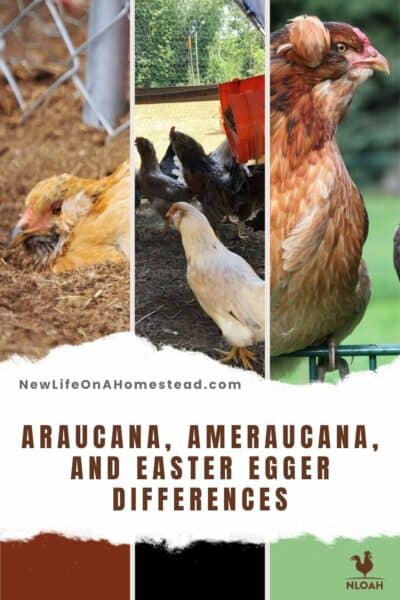
Tom has lived and worked on farms and homesteads from the Carolinas to Kentucky and beyond. He is passionate about helping people prepare for tough times by embracing lifestyles of self-sufficiency.
